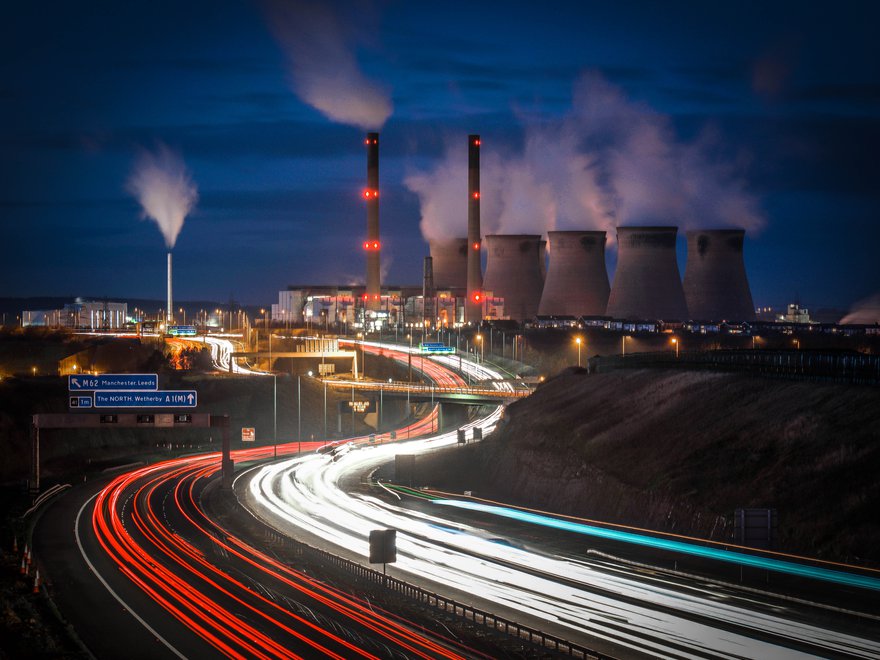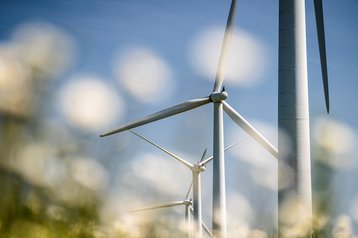Around the world, data centers are often finding they can’t get access to the grid power they need. How do you build a data center in those circumstances?
In recent years, Singapore, Amsterdam, and the Dublin area in Ireland have instituted partial or complete bans on new data center projects. This has been driven partly by fears that uncontrolled development of data centers may use excessive amounts of energy, or else operators will buy up so much renewable power, that not enough is left for the country to decarbonize sectors such as heating and transport.
In Ireland, data centers use around 10 percent of the available electricity, and they preferentially buy renewable power. In 2022, Ireland’s Commission for the Regulation of Utilities (CRU) announced that there must be limits to data center building until 2028, or the country could not build renewable capacity fast enough to meet other needs, including a commitment to decarbonize the grid so that 80 percent of the nation's electricity must come from renewable sources by 2030.
In Singapore, data centers use seven percent of the available capacity, and potentially derail decarbonization ambitions because 94 percent of the country’s grid is powered by fossil fuels.
Even outside these areas, the power demands of data centers are likely to exceed the grid providers’ ability to deliver energy when it is needed. In Virginia, Dominion Power shocked the industry by saying that it could not meet data center power demands in the world’s biggest data center hub, delaying projects by years.
Meanwhile, in West London, it was reported that new housing projects could be banned till 2035, because data centers had bought up all the available connections.
Supply and demand
“There's an exponentially increasing demand for power due to the advent of AI and machine learning,” Jeff Gyzen, mission-critical facilities lead at the US architecture and engineering firm Arcadis, told a DCD panel this year.
“Right now at some of the hotspots, you can expect three to five years before power can be delivered to a site. That's a big problem, because data centers can't wait for that timeframe. In addition, the cost of the power is increasing too, so we're getting costs upwards of 24 cents per kilowatt hour.”
It’s a supply chain problem, says Bob Salter, an energy consultant and professor at Sonoma State University in California: “Supply and demand are out of whack.”
Salter’s home state of California has been aiming for energy efficiency since it brought in the “Title 24” energy code, in response to the 1970s energy crisis. In some ways that has worked too well, he says.
“The Title 24 approach was adopted, and we stopped building power plants. California generation capacity today is lower than it was 20 years ago, and US generating capacity is flat, with coal and nuclear being replaced with renewables.”
Global demand for electric power is expected to grow by a massive 50 percent in the next 20 years, as heating and transport are decarbonized, by shifting from fossil fuel to green electricity.
“Data centers are expected to grow from three percent to four percent of total global power demand in that timeframe,” says Salter, “and things like vehicle electrification are increasing competition for electrical energy.”
The problem, he says, is plain: “A data center is a one to two-year build cycle and electrical energy availability is three years to none.”
The distribution problem
Data centers tend to demand high concentrations of power, in some places like Northern Virginia, where it's physically difficult to get the transmission lines in - so there's a distribution problem as well as a supply problem.
“Distribution is absolutely a problem right now because of the degrading electrical infrastructure,” says Gyzen. “We can't get it to where it’s needed because it takes time to build that distribution network. Those transmission lines and the existing lines are in need of repair, especially in the East Coast where that infrastructure is a lot older and so it essentially equates to an unreliable grid.”
The unreliable grid is more than an inconvenience. It means that data centers still need UPSs, batteries, and generator backups, which compound the emissions problem of the facilities.
The generators need testing regularly, but more concerningly, if extended outages become normal (California has warned of 96-hour breaks in power) then data centers using their own fossil fuel becomes normalized.
Duck and cover
California now gets between 17 and 20 percent of its electricity from renewable sources, but it could get more from existing solar and wind farms.
They produce power in a “duck curve” at different times of day that doesn’t match the curve of demand. This means there’s a further five percent of its power needs that California could get from renewables, but is rejected or “curtailed” because the demand isn’t there.
“We have a curtailment issue, which reduces the usable capacity,” says Salter. “And we're building very large grid-scale solar plants, so that curtailment number is going to increase.
“Traditional backup systems really don't solve the problem at all. And public policy has not necessarily evolved in a manner that is going to help us solve our problems.”
The five percent curtailed suggests a simple equation. It’s around the level of the total power needed by data centers. If that power could be stored, might that be the answer?
Gyzen has worked with battery energy storage systems (BESSes), installing a 400MWh capacity system in Long Beach, California. These can shave the peaks off the mismatch between supply and demand.
“Basically, it helped peak shaving for the utility,” he says: “It allowed the utility AES to take two of their generators offline. This type of technology is starting to spread across the US to assist in utilizing those renewable energy sources.”
Gyzen says curtailed power is “a drop in the bucket” in addressing the whole problem (not just data centers’ needs): “Every little bit helps, there’s got to be other solutions, and we need a multi-prong approach to solving the shortage of energy.”
Salter says the data center industry should step up to a role in helping shape public policy - by encouraging openness to all the power options that industry has to offer.
Given the issues of supply and distribution, the sector also needs to start providing its own power, preferably on-site.
Local power acts as backup for problems in the grid. A microgrid on site can also potentially take the facility off the local utility’s responsibility reducing demand at key moments.
And finally, having local power generation can provide active support, with batteries or other energy sources providing power out onto the grid when needed.
Other tools in the belt
Any onsite power will have to fit into decarbonization strategies. Alongside BESSes, there are other technologies that can play this role in data centers. None of them are perfect.
“We've got a lot of potential tools in the toolbox, and there are roadmaps for all of them. Some of them are longer term, some are shorter term, and we're going to need them all. We need to be looking at the immediate future, and the future 10 and 20 years out.”
Salter continues, with a sigh: “If we had done that 10 years ago, we'd be in a different place right now.”
Renewables
Solar power and wind farms are an obvious answer, and big players are busily funding new capacity on the grid through power purchase agreements. That capacity is remote, and doesn’t address the issue of reliable power on site - and there are problems with considering conventional renewables for this role.
“The surface area required to produce 200MW is huge,” says Salter. He is not wrong. The US National Renewable Energy Laboratory reckons on about six to 10 acres per MW, a figure which is highly fluid, given changing solar energy availability. A 200MW solar farm would cover a couple of square miles.
“We build multi-tenant data centers near metropolitan areas to reduce latency.” In something of an understatement, he says: “And it's tough to put solar and wind farms on-premises in those areas. You can't do it.”
It’s possible to adjust the location of the data centers, putting them closer to transmission lines, or improving communications technology to mitigate the latency.
“That's one of the solutions that's in the toolbox,” he says.
Hydrogen
Hydrogen is a possibility, either burnt in turbines, or consumed in fuel cells. There have been proposals for hydrogen-powered sites, including a 1GW campus proposed by Fidelis New Energy in West Virginia.
The Mountaineer GigaSystem would be powered by fuel cells, using hydrogen created in an onsite electrolysis facility.
Outside of megaprojects like this, as we explain elsewhere in this supplement, the infrastructure to deliver hydrogen is still being developed.
Salter doesn’t see it happening soon: “In the long run, in order to meet sustainability goals, we probably are going to have to have some shifts to hydrogen, but that's certainly not in the immediate future.”
Nuclear
Likewise, nuclear power is a prospect, being led by outlying pioneers. Green Energy Partners (GEP) is planning to use one of the first commercial small modular reactors (SMRs) in the US to power a campus of up to 30 data centers next to the older Surry Nuclear Power Plant in southwestern Virginia.
This plan will take a long time to come off. The first facilities to move in will take power from the existing nuclear grid, while GEP works on a deal with one of several emerging players offering SMRs, which are supposed to be more practical than older giant-sized reactors.
Once it is up and running, GEP says it will produce more than enough energy, and will share some of the surplus in the form of green hydrogen.
But nuclear power plants are notoriously slow to permit and build. Even the smaller SMRs will face hurdles, as they have not yet gone through any permitting processes.
“Nuclear power is going to take years,” he says. “We developed means of dealing with the waste issues 30 years ago, but there’s a long timeline for any path to nuclear solving our problems.”
Cutting loose
Whichever energy source they use, data centers will increasingly cut themselves loose, says Gyzen: “There's been a movement to isolate from the grid, until the utilities can catch up with all this demand. If you do it right, it’s actually extremely beneficial to the environment with the potential for net zero emissions.
“Quite frankly, even if there wasn't the delay in getting the power right now, this is actually a better solution. It's a greener solution. And it's a cheaper solution, because you're saving power costs. I just don't see why you wouldn't do it.”


